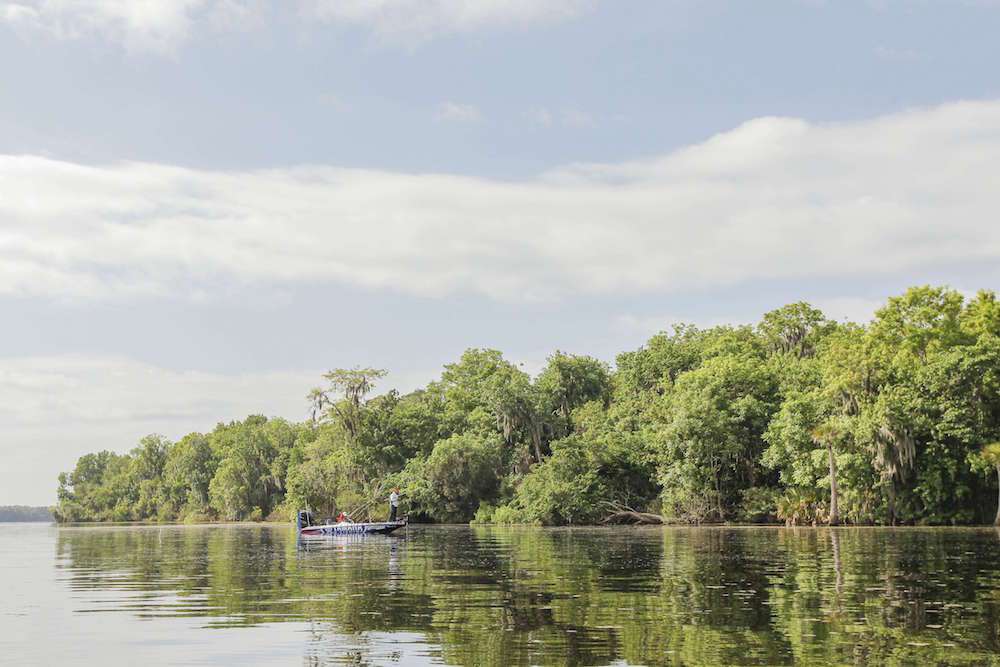
Palatka, Fla. – The Bassmaster Elites Series kicks off its 2019 season Feb. 7 on the St. Johns River, out of a county, Putnam, that still justifiably promotes itself as the “Bass Fishing Capital of the World.”
Floridian Cliff Prince and long-time pro Rick Clunn helped confirm that designation at the Elite Series event there in 2016, as Prince boated a 10-8 trophy and Clunn capped off his 15th career B.A.S.S. victory with an impressive five-fish bag weighing 31-7. But, incredibly, this world-class fishery now faces an unprecedented pollution threat from the watershed of another premiere bass factory to the south, Lake Okeechobee.
“I think the moral of this story is we have to look at water quality and water quantity issues holistically, statewide,” said Lisa Rinaman, St. Johns Riverkeeper. “You can’t play whack-a-mole and move the pollution around because you’re just going to have the same problems in a different area.
“And that’s what we’re seeing here. We have to have long-term thinking and not just short-term, Band-Aid approaches.”
With nutrient-overload manifesting in more and more troublesome algae blooms and a decline in water quality on the Big O, the Florida Legislature in 2007 banned the land disposal of sewage sludge in the watershed. Concurrently, the state allowed redistribution of that sludge to areas in the north, with fewer restrictions.
Sludge is the byproduct of cleaning wastewater and utilities often contract with third-party haulers to transport the sludge to agricultural lands for fertilizer.
But rains then often wash the muck back into nearby waterways.
And now that is what is happening in the upper St. Johns. WJCT Public Media reported that nearly 90,000 tons of sewage sludge have been dumped into the St. Johns River watershed during the past decade.
“The idea is to provide free fertilizer to farmers, but what we’re seeing is it’s a cheap disposal opportunity for utilities and the volumes are just overwhelming the soil and, in effect, the waterways,” Rinaman said.
And the St. Johns Riverkeeper added that the state has permitted more than 70,000 tons to be disposed of annually in the upper basin, which includes Brevard, Indian River and Osceola Counties.
“In 2016, this represented more than 73 percent of the Class B biosolids permitted for land application in the entire state,” the environmental watchdog group added.
“This state-sanctioned spreading of sewage sludge is now degrading the St. Johns River’s water quality and threatening human health. Did they believe that they could simply relocate sewage sludge to a different watershed without a similar degradation of water quality and increased threats to human health?”
Public outcry over this threat to the St. Johns has prompted the Department of Environmental Protection to form a Biosolids Technical advisory Committee to look at the issue. But critics point out that the committee simply will be evaluating the same practice that previously was determined to be harmful around Lake Okeechobee.
“It should come as no surprise that the application of over 70 percent of the state’s biosolids to agricultural lands within the St. Johns watershed would have the same devastating effects,” the Riverkeeper said.
Additionally, four of the seven members of the committee, “benefit financially from this practice and the status quo,” it added. “Not one representative from the local governments or citizens being adversely impacted downstream of the permitted pollution sites was selected to serve on the committee. This is unacceptable.”
The St. Johns Riverkeeper is urging local governments, businesses, residents, visiting anglers and others to voice their concerns and request relief now for the river.
“We urgently request a moratorium on sewage sludge applications within the St. Johns river watershed until a protective alternative disposal method or new technology is implemented that will protect Florida’s waters, economy, public investment, and human health,” it said.
For more information, visit the St. Johns Riverkeeper website.





